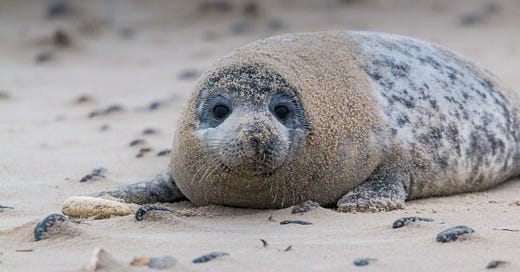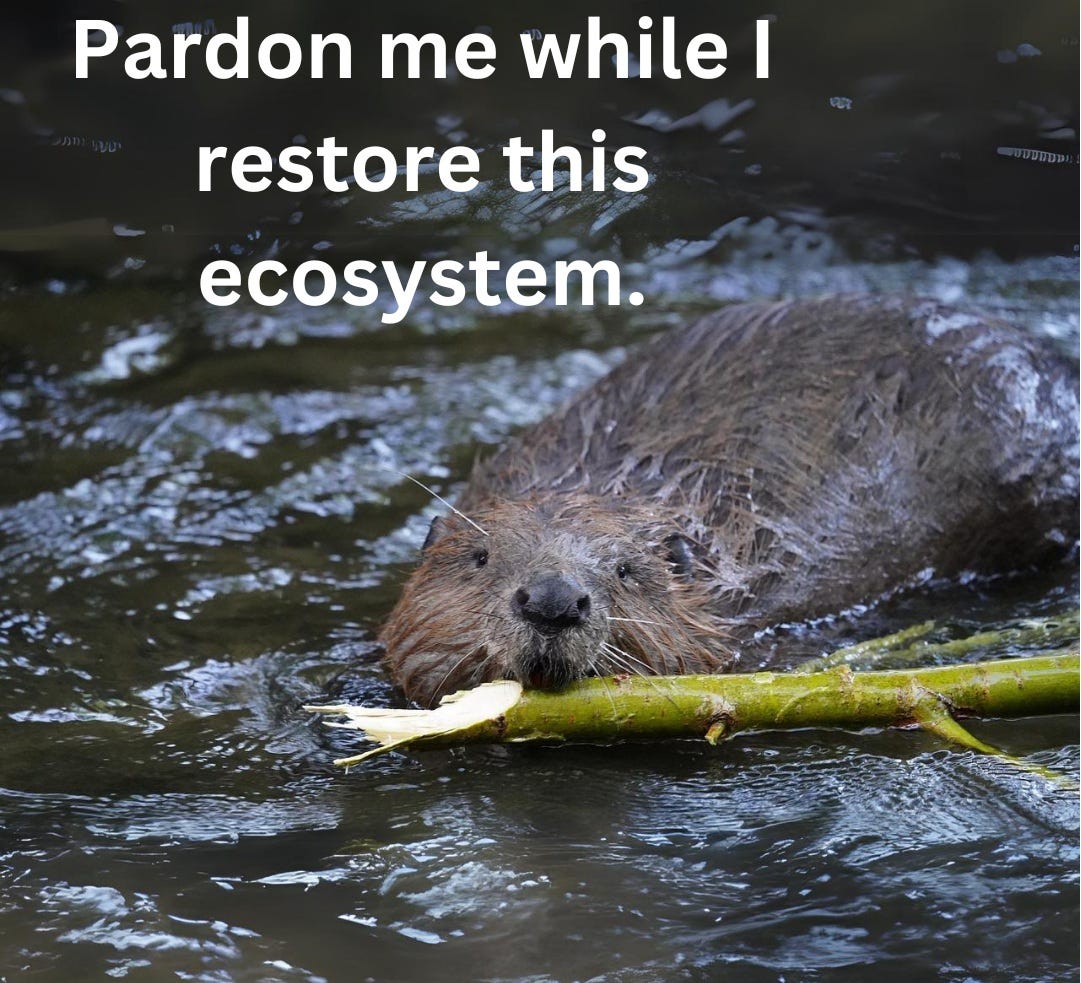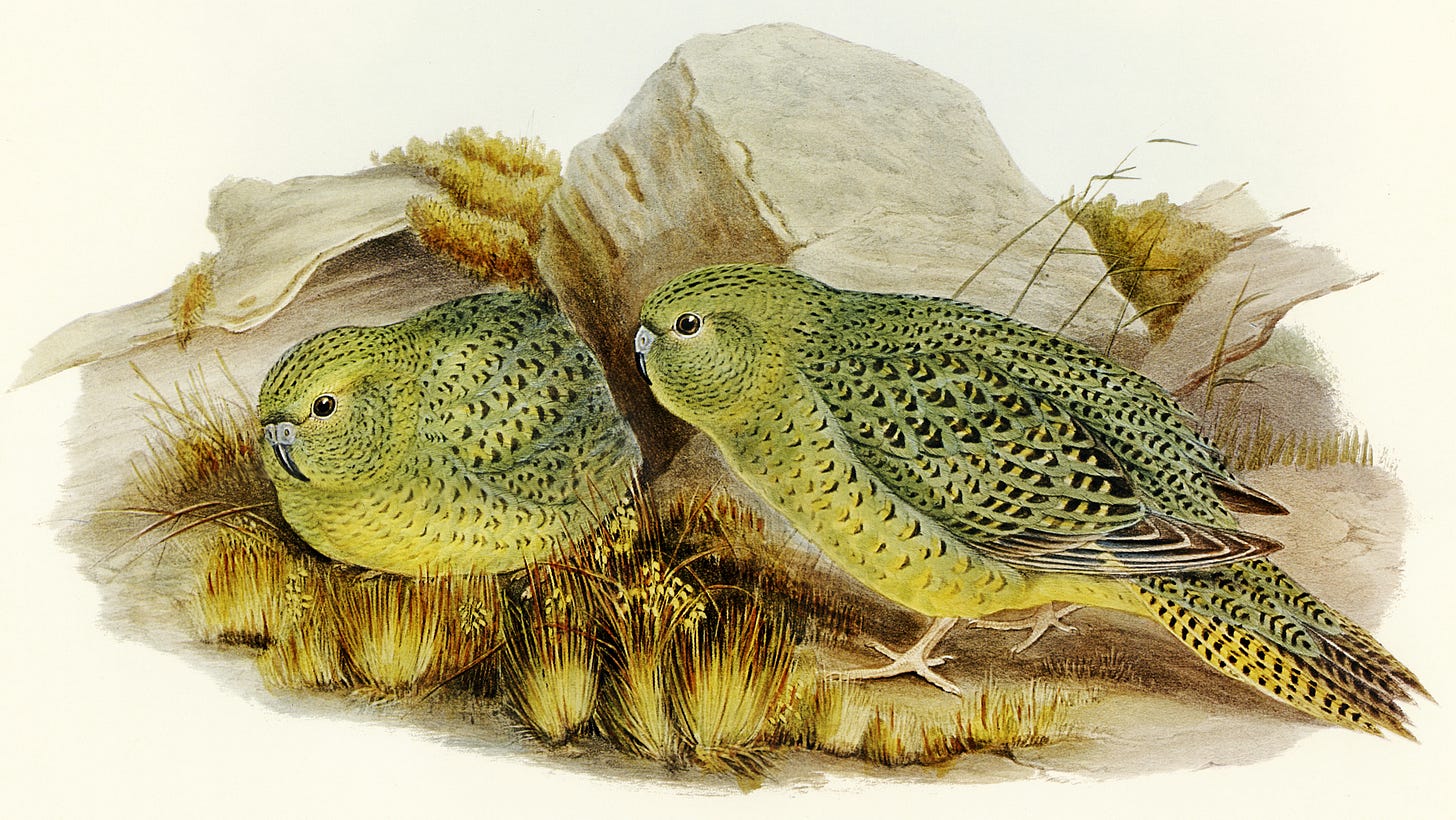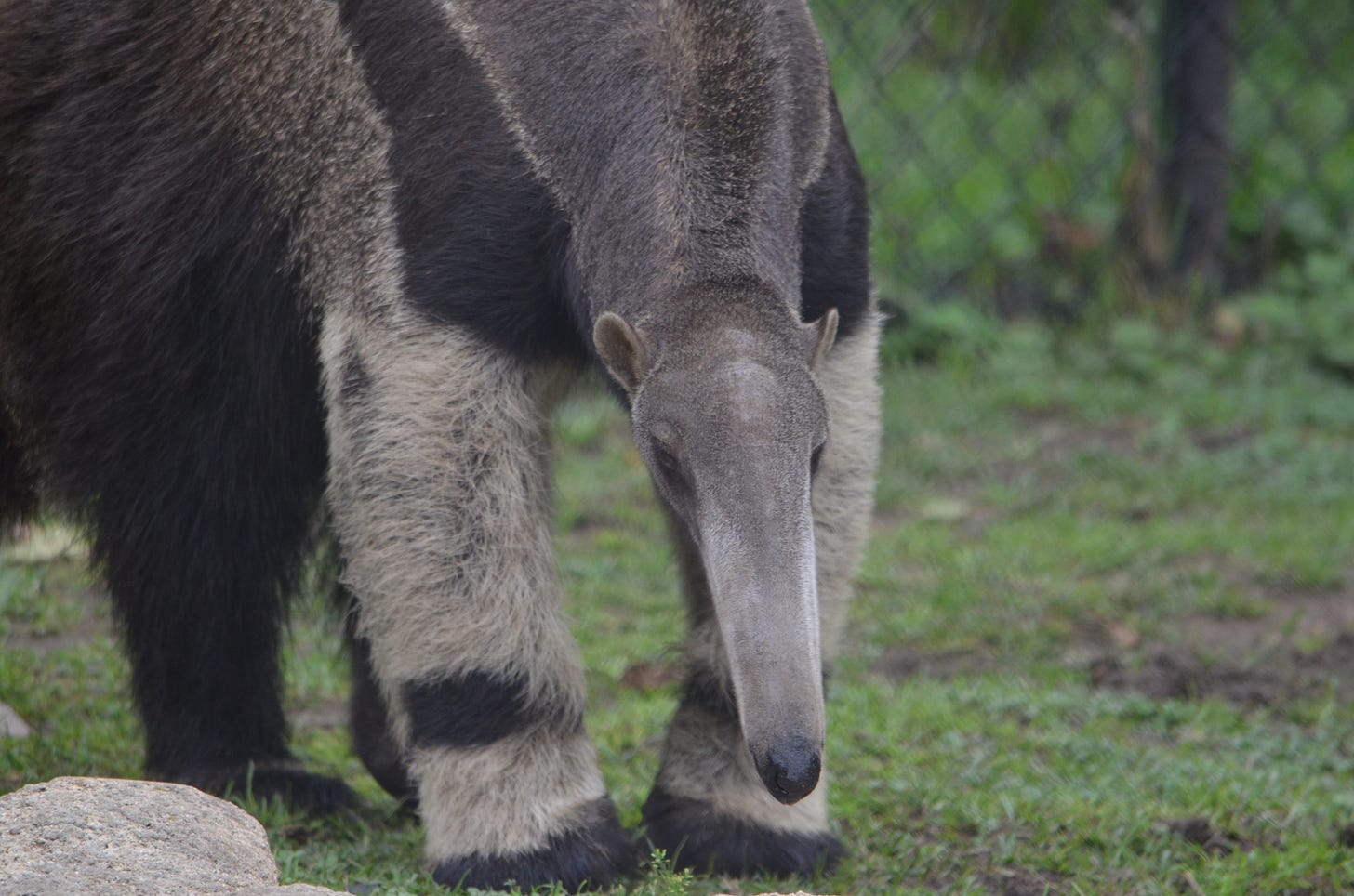Hopeful headlines: Seals, night parrots, beavers, snow leopards, salamanders, ash trees and giant anteaters!
A study shows conservation works, and so do these headlines.
Does conservation work? When we protect land, enact good laws, file effective legal challenges, fix past mistakes and/or harness volunteers, does it help save species from extinction? The answer is a resounding “yes,” according to a study published this week in the journal PLOS Biology that examined 67,000 species listed with the International Union for Conservation of Nature. Those that had improved in status — moving from endangered to threatened or least concern — were all benefiting from human conservation efforts.
The paper uses as an example a group in Papua New Guinea that worked with 50 villages comprising 50,000 people to raise chickens for food instead of shooting endangered tree kangaroos. A hunting ban has been in place since 1999, and some critically endangered species of tree kangaroo are rebounding.
Here are a few more stories that show us how to get it done.
Hopeful Headlines

Grey seals on the rise in the U.K.
A nature reserve in England is celebrating a record number of grey seals on its shores. A recent count showed 563 seals at South Walney Island, whereas only a handful were present in the 1980s.
According to Oceanographic:
Grey seals at South Walney Nature Reserve are quite the success story. Just ten years ago, the colony there was a non-breeding colony and the seals found there were typically older bulls. Back in 2015, however, two fluffy white pups made history as the first grey seal pups to be born on the remote Irish Sea island. Since then, the number of pups has been increasing year-on-year and the island now hosts an active breeding colony.
Grey seals were once hunted to near extinction, with only 500 remaining in the British Isles by the early 20th Century. The UK banned seal hunting in 1970. Now, grey seals number 120,000 in the U.K and 650,000 worldwide.
Beavers can go wild in England once more
After much debate, England has decided beavers can go wild once more. Beavers returned to the country in 2001 after an 800-year absence,1 and were supposed to live only in an enclosure in a nature reserve. Before long, hundreds were roaming wild in Kent. Still, it was illegal for people to release them outside of a monitored enclosure until last week. Congrats, England!
In other beaver news, the Czech Republic was planning to spend a lot of money building some dams for flood control when a family of beavers did it for free:
A beaver colony in the Brdy region has gained overnight fame by building several dams in the Brdy protected landscape area, creating a natural wetland exactly where it was needed. It saved the local authorities 30 million crowns, and has the public cracking jokes about public administration and red tape.
One of my favorite topics of all time is beavers, because they are ecosystem superheroes. They create wetlands that are great carbon sinks, wildfire barriers, groundwater recharge stations, and immense habitats for fish, bugs, frogs and crayfish that can feed larger animals like birds and river otters. So, here, I must insert one of this publication’s unofficial logos:
China’s Loess Plateau: ‘All the birds returned’ How a Chinese project led the way in water and soil conservation
The Guardian reports:
… [I]n 1999 the Chinese government took drastic emergency action with the launch of Grain to Green, a pilot project backed by World Bank funding, to regreen the plateau and reverse the damage done by overgrazing and overcultivation of the once forested hillsides that would become what the bank described in 2004 as “the largest and most successful water and soil conservancy project in the world.”
This comes on the heels of last fall’s news that China completed a major segment in its “Great Green Wall,” a 2,000-mile regreening effort to prevent desertification and sandstorms that cover farmland and cities as far away as Beijing.
South Africa: Fishermen agree to keep away from endangered penguin colonies
Conservationists sued the commercial fishing industry in South Africa after African penguins showed a steep population decline. Intense negotiations have produced a settlement.
The BBC reports:
Six key breeding areas are to be safeguarded to help save the African penguin, following a landmark court order in South Africa. Last year scientists warned that the species was declining by around 8% every year and could become extinct within a decade. The court has imposed no-fishing zones around the breeding colonies to prevent so-called purse seine fishing vessels, which use large nets, from catching sardines and anchovies for the next 10 years.
Australia: Indigenous rangers deploy hi-tech to keep feral cats from tiny marsupials and night parrots
Who knew there was such a thing in this beautiful world as a night parrot? Considered extinct for 100 years, a new population of the rare, ground-dwelling, nocturnal birds was discovered last year on indigenous-managed land in the Australian Outback.
Now, farmers, indigenous groups and government agencies are partnering to protect 180,000 hectares (445,000 acres) of Outback in Queensland, home to tiny marsupials and night parrots. They hope to monitor rare species and track and trap feral cats by deploying thermal scopes, cameras and recording devices.
ABC reports:
Ben Klaassen said the eight monitoring sites stretched across 500,000ha of Channel Country represented a doubling of control efforts.
"Feral cats are relentless hunters that don't recognise property boundaries," he said.
Pakistan: Four snow leopards spotted in the Himalayas
A game warden who lives in the Himalayas filmed four snow leopards together, an extremely rare sight. The leopards, though appearing full-grown, were likely a mother and her three cubs.
CNN reports:
Known locally as the “ghost of the mountains,” they camouflage easily in their natural habitat of the Karakoram Mountain range in Pakistan’s Gilgit Baltistan region. Environmental anthropologist Shafqat Hussain says the rocky terrain in the north of Pakistan is perhaps the “best snow leopard habitat in the world.”
According to IUCN, there are about 7,500 snow leopards in the wild, scattered across 12 countries, including China, Bhutan, Nepal, India, Pakistan, Russia, and Mongolia. Conservationists are working in Kyrgyzstan, Kazakhstan and Tajikistan to reduce human-wildlife conflict and allay concerns over livestock predation. One threat to snow leopards is the decline of their traditional wild prey, such as ibex.
Canada: Indigenous alliance moves to protect Seal River watershed
A commission of four indigenous tribes wants to protect a pristine watershed in Canada’s far north and make it a national park. Meanwhile, Canada’s federal government has been eyeing the region for mining critical minerals.
CBC reports:
The Seal River watershed, a 50,000-square-kilometre region west of the Hudson Bay, is one of the most pristine watersheds in the world, and one of its richest carbon sinks.
At least 25 known at-risk species inhabit the watershed, according to the federal government, including wolverines, polar and grizzly bears, and barren-ground caribou.
Florida: Endangered salamanders released on private land test new conservation model
Gun & Garden reports:
Until recently, a landowner didn’t have a lot of incentive to aid in the recovery of a federally endangered species, as it put them in the crosshairs of federal oversight, regulation, and at worst, legal action under the Endangered Species Act. “This is voluntary conservation, and you can’t get cooperation when you’re waving a big stick of threats at people,” explains JJ Apodaca of the Amphibian and Reptile Conservancy, another partner in the recovery of the reticulated flatwoods salamander. “This is a huge step forward.” After all, over 90 percent of land in the Southeast is in private hands.
Washington State: Undammed Elwha River teems with wildlife and salmon
After allowing ten years for their river to recover from dam removal, a Washington tribe has decided it’s OK to go fishing again. This is related to my post a few weeks ago, “Bring down the dams!”
Video by Oregon Public Broadcasting:
It’s been over a decade since two dams came out of the Elwha River on Washington’s Olympic Peninsula. Salmon are returning, cougars, elk, foxes and bears roam 800 acres of newly restored land, and the river runs wild, tearing up the road that ran along its banks. For the first time in over a hundred years, the Lower Elwha Klallam tribal members can catch salmon on a free-flowing Elwha.
U.S. Northeast: How tearing down small dams is helping restore rivers
Yale360 reports:
Although dam removals have been happening since 1912, the vast majority have occurred since the mid-2010s, and they have picked up steam since the 2021 Bipartisan Infrastructure Law, which provided funding for such projects. To date, 806 Northeastern dams have come down, with hundreds more in the pipeline.
But wait! Why is a beaver dam a great thing but a man-made dam so horrible? Many beaver complexes include a passable canal away from the main dam, a small waterway the beavers and fish can use to get around.
In “Why we love beavers,” the Ipswich River Watershed Association says, “Beaver dams don’t block fish passage. … We are working hard to address man-made dams that block critical fish passage for alewives and shad that spawn in our watershed. So, you might be asking, do beaver dams pose a similar problem for local fish? In short, no! For native fish that co-evolved with beaver dam activity in the systems, beaver dams are passable and not a problem.”
See also: Free flowin': Pennsylvania led nation with 27 dams demolished in 2024, report says
U.S. Midwest: Researchers breed ash trees immune to invasive beetle
Since 2002, a small beetle from Asia has been killing millions of ash trees across North America. Luckily, an observant U.S. Forest Service intern helped researchers discover ash trees that are immune to invasive emerald ash borer beetles. On a walk through a dying ash forest ten years ago, the intern noticed one that was alive and well.
“We knew it was big to find a surviving tree,” says ecologist Kathleen Knight in the video below from Great Lakes Now.
Now, a USFS geneticist who bred those surviving trees has produced trees with even stronger immunity, creating hope for a species that spans North America. This news reminds me of the genetic work that has been done to restore the American chestnut tree.
Thanks to writer
for bringing this story to my attention. Unfortunately, these are exactly the types of scientists being fired by the current administration.Watch this video to feel amazed, hopeful and grateful for passionate scientists who work for the U.S. government! This is how progress happens.
South America: Giant anteaters return to Argentina and Brazil
March 20 was World Rewilding Day, when we celebrate conservation efforts that show nature can bounce back if we give it a chance. Here, Mongabay reports on four species that have benefitted from human conservation efforts, including giant anteaters, zebra sharks and great-billed seed finches, once hunted to near extinction for the pet trade.
In Argentina’s wetlands, since the reintroduction of the giant anteater to the 758,000-hectare (1.9 million-acre) Iberá National Park in 2007, multiple generations of the 2-meter-long (6-foot) mammal are now thriving in their original habitat. The success of the rewilding effort has spilled over across the border, with giant anteaters spotted in southern Brazil for the first time in 130 years.
I cannot imagine a world without these:
A never ending well of good news
Well, pooh, the system tells me this post is “too long for email.” I have a spreadsheet 50 items long that I’ll never get through. What a problem. Too much good news to share! I can’t hold back. Here are a few more:
$62M deal connects 500K acres of Maine conservation land
India scrambles to set up new tiger reserves as big cat population booms
India: Rare Marbled Cat Spotted In Dehing Patkai National Park
Eastern U.S.: Chestnut trees are returning to forests
Costa Rica is saving forest ecosystems by listening to them
Inside the Herculean effort to study and save the world’s smallest sea turtle
World Wildlife Fund: Eastern monarch butterfly population nearly doubles in 2025
🌊🦈🌳🦫🦆🕊️🦜🐜🐟🐅🐢🦋
FIX the NEWS: If you’re interested in encouraging, insightful, optimistic, solutions-based news about more than just the environment, head over to Fix the News, a site I’ve just recently discovered. No affiliation with Earth Hope.
About Earth Hope:
Earth Hope is a solutions-based journalism project that highlights environmental success stories from around the globe, because hope is the foundation of progress. I’m Amanda Royal, a former newspaper reporter and current eco-news junkie. Read more about this project and what inspired it.
Visit earthhope.substack.com for more stories. Visit my Services page if you’re a writer who’d like some help figuring out Substack.
News reports that mention “400-year absence” are referring to the last time beavers were seen in Scotland or the UK overall. According to The Guardian, the last reported sighting in England before reintroductions was 800 years ago. Wow.









Thank you, Amanda. Your newsletter was a balm for my soul in these times that are so full of discord and attacks on our planet.
We strive to save Mother Earth.